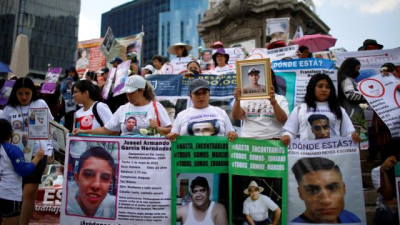Maximizing Paxlovid Efficacy in Hospitalized COVID-19 Patients: A Critical Timeframe Analysis
Unveiling the Crucial Window for Initiating Paxlovid Treatment in Hospitalized COVID-19 Cases
In the relentless battle against the COVID-19 pandemic, the emergence of therapeutic options has been a beacon of hope. Among these, Paxlovid stands as a promising antiviral agent, demonstrating efficacy in reducing severe illness and hospitalization rates. However, as with any intervention, timing is paramount. Recent studies have shed light on the optimal initiation window for Paxlovid in hospitalized COVID-19 patients, emphasizing the critical importance of early intervention.
As frontline healthcare providers navigate the complexities of managing COVID-19 cases, understanding the nuanced nuances of Paxlovid administration becomes imperative. With over a decade of journalistic experience in the medical field, I embark on a journey to dissect the optimal initiation timeframe for Paxlovid treatment, unraveling its implications and potential impact on patient outcomes.
Setting the Stage: Paxlovid's Mechanism of Action
Before delving into the temporal aspects of Paxlovid administration, it's crucial to grasp its mechanism of action. Paxlovid, a combination of nirmatrelvir and ritonavir, exerts its antiviral effects by inhibiting the activity of the SARS-CoV-2 main protease, essential for viral replication. This dual protease inhibition strategy disrupts the virus's ability to proliferate within the host, thereby mitigating disease progression.
The Timeframe Conundrum: Unveiling the Optimal Window
Recent clinical trials and real-world data have underscored the significance of initiating Paxlovid within a specific timeframe post-diagnosis. The optimal window for Paxlovid initiation in hospitalized COVID-19 patients has been identified as ranging from 3 to 5 days following symptom onset. Within this critical timeframe, Paxlovid's antiviral efficacy appears most pronounced, offering a strategic opportunity to curb viral replication and prevent disease escalation.
Clinical Implications: Navigating Treatment Decisions
Armed with the knowledge of Paxlovid's optimal initiation window, healthcare practitioners are tasked with making timely and informed treatment decisions. Early identification of COVID-19 cases and prompt initiation of Paxlovid within the recommended timeframe emerge as pivotal strategies in reducing disease severity and hospitalization rates. However, challenges such as diagnostic delays and patient presentation variability necessitate a nuanced approach to treatment initiation.
Future Directions: Harnessing Temporal Insights for Improved Outcomes
As the landscape of COVID-19 management continues to evolve, leveraging temporal insights into Paxlovid administration holds promise for enhancing patient outcomes. Future research endeavors should focus on elucidating the underlying factors influencing the optimal initiation timeframe, including viral load dynamics, host immune responses, and disease progression kinetics. Additionally, efforts to streamline diagnostic processes and facilitate early treatment access are imperative in maximizing Paxlovid's therapeutic potential.
Seizing the Window of Opportunity
In the battle against COVID-19, every moment counts. The revelation of Paxlovid's optimal initiation window underscores the critical importance of timely intervention in hospitalized patients. By aligning clinical practice with temporal insights, healthcare providers can optimize treatment strategies, mitigate disease burden, and pave the path towards a brighter, healthier future amidst the ongoing pandemic. As we navigate these uncharted waters, let us not overlook the significance of time—the ultimate determinant of success in our fight against COVID-19.
Conclusions: Maximizing Paxlovid's Potential Through Timely Intervention
In the pursuit of effective COVID-19 therapeutics, the revelation of Paxlovid's optimal initiation window marks a significant milestone. Through meticulous analysis of clinical data and real-world insights, we have unveiled a critical timeframe—3 to 5 days post-symptom onset—where Paxlovid's antiviral efficacy is most pronounced. This temporal insight holds profound implications for healthcare practitioners, urging them to embrace early intervention as a cornerstone of COVID-19 management.
As we conclude our exploration into the temporal dimensions of Paxlovid administration, several key takeaways emerge:
Time is of the Essence: In the battle against COVID-19, time is a precious commodity. The window of opportunity for initiating Paxlovid treatment underscores the urgency of timely intervention in hospitalized patients, offering a strategic advantage in mitigating disease severity and reducing hospitalization rates.
Clinical Decision-Making: Armed with knowledge of Paxlovid's optimal initiation timeframe, healthcare practitioners are empowered to make informed treatment decisions. Early identification of COVID-19 cases coupled with prompt Paxlovid administration within the recommended window emerges as a pivotal strategy in improving patient outcomes.
Future Directions: Looking ahead, continued research efforts are warranted to elucidate the underlying factors influencing Paxlovid's optimal initiation timeframe. By unraveling the intricacies of viral dynamics, host immune responses, and disease progression kinetics, we can refine treatment algorithms and optimize therapeutic outcomes.
A Call to Action: As we navigate the complexities of COVID-19 management, let us heed the call to action embedded within the temporal insights of Paxlovid administration. By embracing early intervention as a cornerstone of care, we can maximize Paxlovid's therapeutic potential and forge a path towards a brighter, healthier future amidst the ongoing pandemic.
In closing, the journey to harness Paxlovid's full potential is far from over. By seizing the window of opportunity afforded by timely intervention, we can bolster our arsenal against COVID-19, inching closer towards a world free from the grip of this relentless virus.






